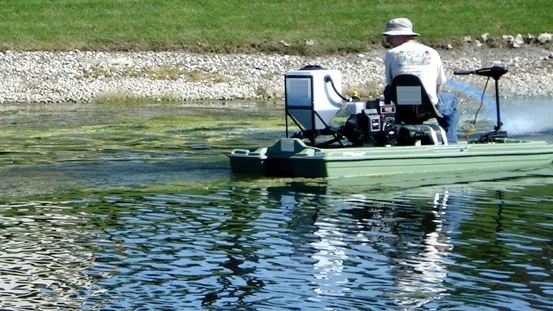Algae Blooms
Most algae in District canals is not harmful to human health and provides a food source for aquatic life
Algae are simple organisms that grow through photosynthesis, a process by which sunlight is used to metabolize nutrients. Algae are a basic component of the food chain and can be found in marine, estuarine, fresh water lakes, canal systems and even swimming pools. Algae appear as green, red or yellowish-brown particles that float on the water surface.
Most algae found in District’s canals, while visually unappealing, are not harmful to human health. However, some types, like “Blue-green” algae, which is a cyanobacteria, secrete toxins that may be harmful. The algae toxins can be inhaled by people living around the waterbody. It will aggravate respiratory illnesses like asthma. Symptoms of exposure to toxic algae include difficulty breathing, wheezing, skin rashes, headaches, and possibly tingling in the fingers and toes if the water was consumed.
Although algae are a normal component of an aquatic ecosystem, nutrient-rich waters warmed by the summer sun, provide a favorable medium for the overgrowth. This overgrowth is called an ‘algae bloom’. Herbicide or chemical treatments for the removal of algae uses a heavy metal compound that may adversely impact the waterbody. Since algae is a food source for aquatic animals and does not impact flood control operations, the District does not regularly treat its canal system for algae blooms. Most algae growth in our canals is harmless and will dissipate on its own or will be flushed out after a heavy rainfall.
Additional information on algae toxins can be found at the US Environmental Protection Agency and the Center for Disease Control website at www.epa.gov/nutrientpollution/harmful-algal-blooms.




